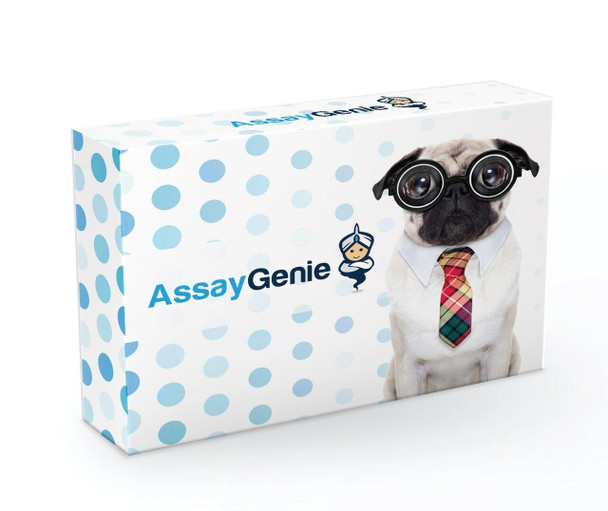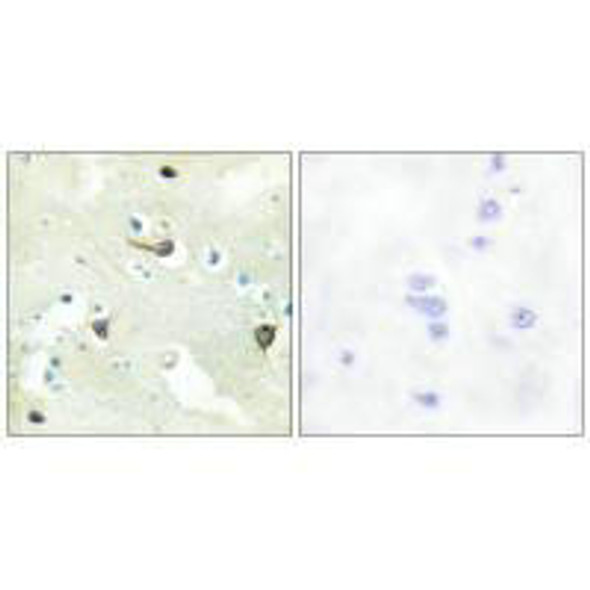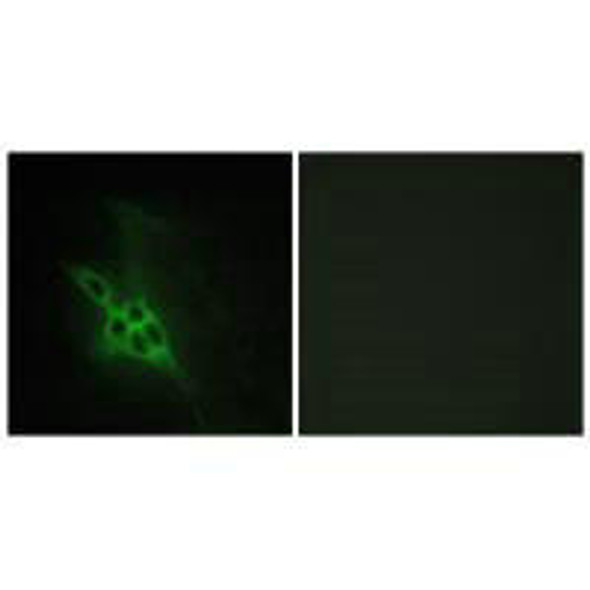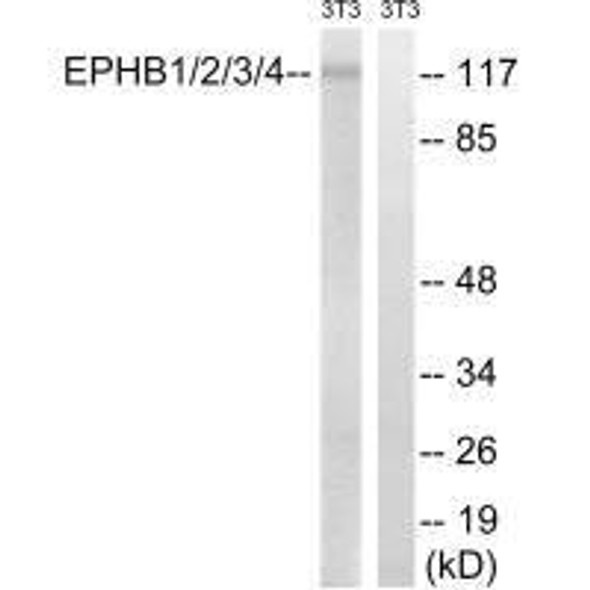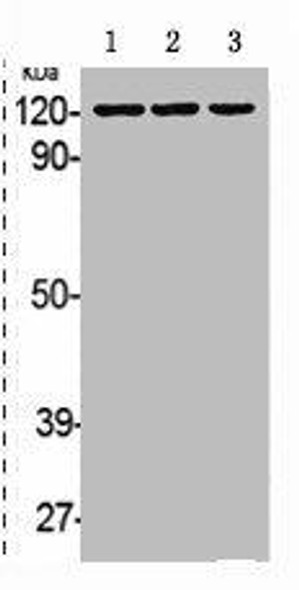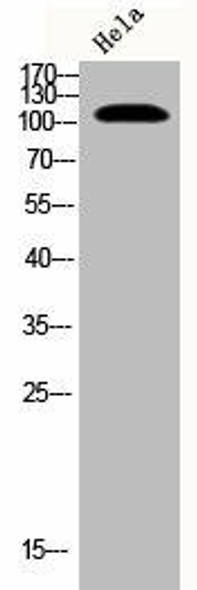EPHB1/EPHB2/EPHB3 Antibody (PACO03626)
- SKU:
- PACO03626
- Product Type:
- Antibody
- Reactivity:
- Human
- Mouse
- Host Species:
- Rabbit
- Isotype:
- IgG
- Applications:
- ELISA
- IHC
- IF
- Antibody Type:
- Polyclonal Antibody
- Conjugation:
- Unconjugated
Description
EPHB1/EPHB2/EPHB3 Antibody (PACO03626)
The EphB1/EphB2/EphB3 Polyclonal Antibody (PAC003626) is a valuable tool for researchers studying the Eph receptor family, specifically EphB1, EphB2, and EphB3. These cell surface receptors play important roles in cell signaling, development, and tissue homeostasis. Raised in rabbits, this antibody is highly reactive with human samples and has been validated for use in Western blot applications. It binds specifically to EphB1, EphB2, and EphB3 proteins, allowing for the detection and analysis of these receptors in a variety of cell types. This makes it an ideal choice for studies in developmental biology, neuroscience, and cancer research.
The Eph receptors are known to be involved in a wide range of biological processes, including cell migration, adhesion, and differentiation. Dysregulation of Eph receptor signaling has been implicated in various diseases, making them attractive targets for therapeutic intervention. By understanding the role of EphB1, EphB2, and EphB3 in cell signaling and development, researchers can gain valuable insights into disease mechanisms and potentially identify new therapeutic strategies.
| Antibody Name: | EPHB1/EPHB2/EPHB3 Antibody |
| Antibody SKU: | PACO03626 |
| Size: | 50ug |
| Host Species: | Rabbit |
| Tested Applications: | ELISA, IHC, IF |
| Recommended Dilutions: | IHC:1:100-1:300, IF:1:200-1:1000 |
| Species Reactivity: | Human, Mouse |
| Immunogen: | synthesized peptide derived from the Internal region of human EphB1/2/3. |
| Form: | Liquid |
| Storage Buffer: | Liquid in PBS containing 50% glycerol, 0.5% BSA and 0.02% sodium azide. |
| Purification Method: | The antibody was affinity-purified from rabbit antiserum by affinity-chromatography using epitope-specific immunogen. |
| Clonality: | Polyclonal |
| Isotype: | IgG |
| Conjugate: | Non-conjugated |
| Synonyms: | EPHB1; ELK; EPHT2; HEK6; NET; Ephrin type-B receptor 1; ELK; EPH tyrosine kinase 2; EPH-like kinase 6; EK6; hEK6; Neuronally-expressed EPH-related tyrosine kinase; NET; Tyrosine-protein kinase receptor EPH-2; EPHB2; DRT; EPHT3; EPTH3; ERK; |
| UniProt Protein Function: | EphB1: a receptor tyrosine kinase of the Eph family. Receptor for members of the ephrin-B family: ephrin-B1, -B2 and -B3. The Eph receptor tyrosine kinase family, the largest in the tyrosine kinase group, has fourteen members. They bind membrane-anchored ligands, ephrins, at sites of cell-cell contact, regulating the repulsion and adhesion of cells that underlie the establishment, maintenance, and remodeling of patterns of cellular organization. Eph signals are particularly important in regulating cell adhesion and cell migration during development, axon guidance, homeostasis and disease. EphA receptors bind to GPI-anchored ephrin-A ligands, while EphB receptors bind to ephrin-B proteins that have a transmembrane and cytoplasmic domain. Interactions between EphB receptor kinases and ephrin-B proteins transduce signals bidirectionally, signaling to both interacting cell types. Eph receptors and ephrins also regulate the adhesion of endothelial cells and are required for the remodeling of blood vessels. The ligand-activated form of EphB1 interacts with GRB2, GRB10 and NCK through their respective SH2 domains. Four alternatively spliced isoforms are known. |
| UniProt Protein Details: | Protein type:Protein kinase, TK; Kinase, protein; EC 2.7.10.1; Protein kinase, tyrosine (receptor); Membrane protein, integral; TK group; Eph family Chromosomal Location of Human Ortholog: 3q21-q23 Cellular Component: cytosol; early endosome membrane; extracellular region; integral to plasma membrane; plasma membrane Molecular Function:protein binding; transmembrane-ephrin receptor activity Biological Process: angiogenesis; axon guidance; cell-substrate adhesion; central nervous system projection neuron axonogenesis; detection of temperature stimulus involved in sensory perception of pain; ephrin receptor signaling pathway; establishment of cell polarity; neurogenesis; positive regulation of synaptogenesis; protein amino acid autophosphorylation; regulation of JNK cascade; retinal ganglion cell axon guidance |
| NCBI Summary: | Ephrin receptors and their ligands, the ephrins, mediate numerous developmental processes, particularly in the nervous system. Based on their structures and sequence relationships, ephrins are divided into the ephrin-A (EFNA) class, which are anchored to the membrane by a glycosylphosphatidylinositol linkage, and the ephrin-B (EFNB) class, which are transmembrane proteins. The Eph family of receptors are divided into 2 groups based on the similarity of their extracellular domain sequences and their affinities for binding ephrin-A and ephrin-B ligands. Ephrin receptors make up the largest subgroup of the receptor tyrosine kinase (RTK) family. The protein encoded by this gene is a receptor for ephrin-B family members. [provided by RefSeq, Jul 2008] |
| UniProt Code: | P54762 |
| NCBI GenInfo Identifier: | 1706663 |
| NCBI Gene ID: | 2047 |
| NCBI Accession: | P54762.1 |
| UniProt Secondary Accession: | P54762,O43569, O95142, O95143, Q0VG87, A8K593, B3KTB2 B5A969, |
| UniProt Related Accession: | P54762 |
| Molecular Weight: | 26,906 Da |
| NCBI Full Name: | Ephrin type-B receptor 1 |
| NCBI Synonym Full Names: | EPH receptor B1 |
| NCBI Official Symbol: | EPHB1 |
| NCBI Official Synonym Symbols: | ELK; NET; Hek6; EPHT2 |
| NCBI Protein Information: | ephrin type-B receptor 1 |
| UniProt Protein Name: | Ephrin type-B receptor 1 |
| UniProt Synonym Protein Names: | ELK; EPH tyrosine kinase 2; EPH-like kinase 6; EK6; hEK6; Neuronally-expressed EPH-related tyrosine kinase; NET; Tyrosine-protein kinase receptor EPH-2 |
| Protein Family: | Ephrin type-B receptor |
| UniProt Gene Name: | EPHB1 |
| UniProt Entry Name: | EPHB1_HUMAN |

